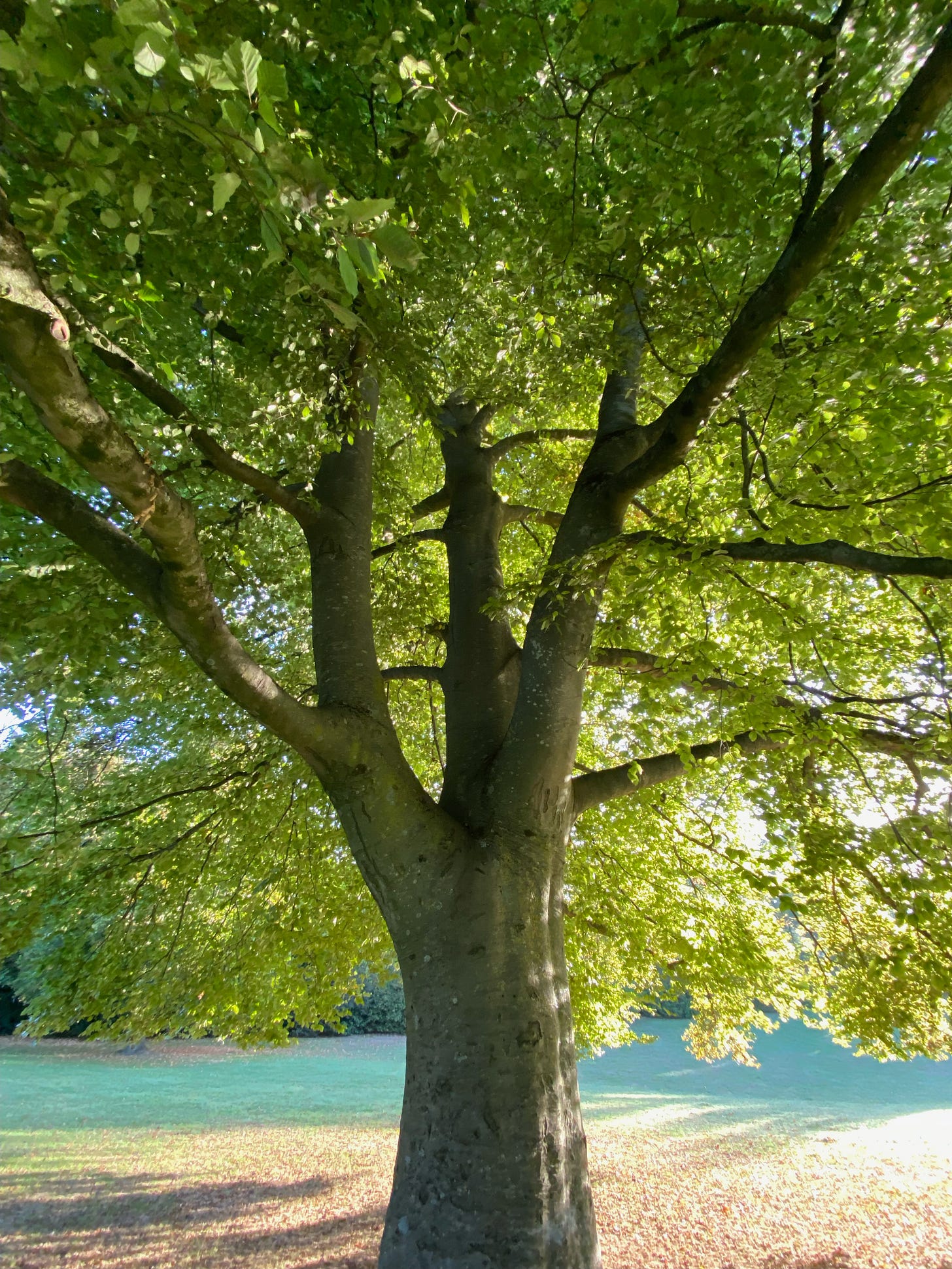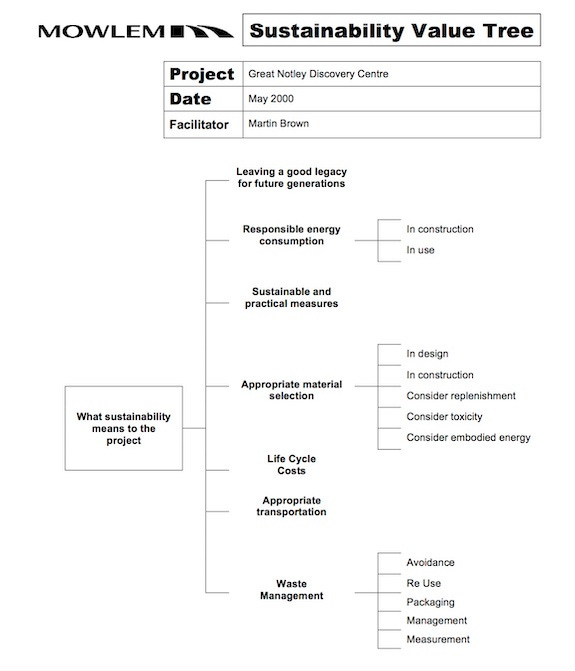Thinking Like a (Value) Tree
... regenerative thinking from 2000
Welcome …
Searching back through files recently I came across case studies for the Great Notley Discovery Center in Essex. Awarded the Environmental Initiative of the Year 2000, the centre designed by Fulcrum Consulting and Penoyre & Prasad Architects was constructed by John Mowlem around 2000. The Discovery Center was also nominated as an M4I (pre-runner to Constructing Excellence) exemplar project.
Heading up Mowlem’s Business Improvement with a remit that covered ISO 14001 and sustainability, I led several project workshops, predominantly with the construction supply chain.
It was a period when value management, (real) value engineering and related value trees were a common approach for determining what value means to a project along with the why and how those values would be delivered. Finding the files jogged my memory of the powerful clarity that Value Trees bring to a project team. Indeed, looking at the objectives in that 2000 value tree, I am struck by how well they resonnate with the topics we discuss today under a regenerative label. Interestingly carbon wasnt the major thing in 2000, but embodied energy and toxicity in materials were right there on the agenda.
The How reads from left to right (from the Roots, through the Trunk and into the Branches where it will receive action and nourishment. Each branch is effectively an action with assigned roles, responsibilities, measures, and, where appropriate costs).
The Why reads right to left from branches to the roots - the why we are taking these actions - to address the core, root value).
The Value Tree approach has successfully been used in a variety of sustainability workshops on many occasions since, for example for a hosuing project recently where Circular Economy was the key value.
Not long after those early 2000s of using Value Management and Value Engineering in major and not-so-big construction projects, on a trip to New Zealand in 2004 I was introduced to Tipu Ake Leadership Model. The full name is Tipu Ake ki te Ora which means“growing from within ever upwards towards wellbeing” This strongly influenced my thinking, in that we can indeed think like a tree, organically, from soil to sunlight. (My thinking continued to grow through complexity and system thinking to find the Living Building Challenge in 2011 and on into the regenerative space of today)
Tipu Ake is an organic project model that helps us operate in a world of complexity, chaos, interdependency and ambiguity. It embraces international leadership model thinking and Living Systems Thinking
Thinking like a Tree
There doesn’t seem to be a single, definitive origin for the phrase “think like a tree.” It’s more of a concept that has developed over time through various nature writers, philosophers, and environmentalists as a way to expand empathy and understanding of our embeddedness in the natural world. From Ralph Waldo Emerson in the 19th century who advocated “thinking like a plant or animal” to gain insights, down through the ages and writers such as John Muir, Aldo Leopold, Joanna Macy and more recently Canadian author and philosopher Charlene Spretnak has analysed Leopold’s land ethic and described how “thinking like a Douglas fir tree” opens awareness of interdependence.
See also an early substack on this.
Regenerative Value Management and Engineering
I continue to run training and facilitation of Value Management (for kick-starting design workshops and charrettes, now with an essential core of regenerative nature-positive and biophilia) and Value Engineering (essentially for selection of sustainable materials and methodologies). If you would like to know more, please do get in touch.
Here is a quick explainer of what a Value Tree from a value management perspective, along with a tree template for Becoming Nature-Positive for you to build upon.




